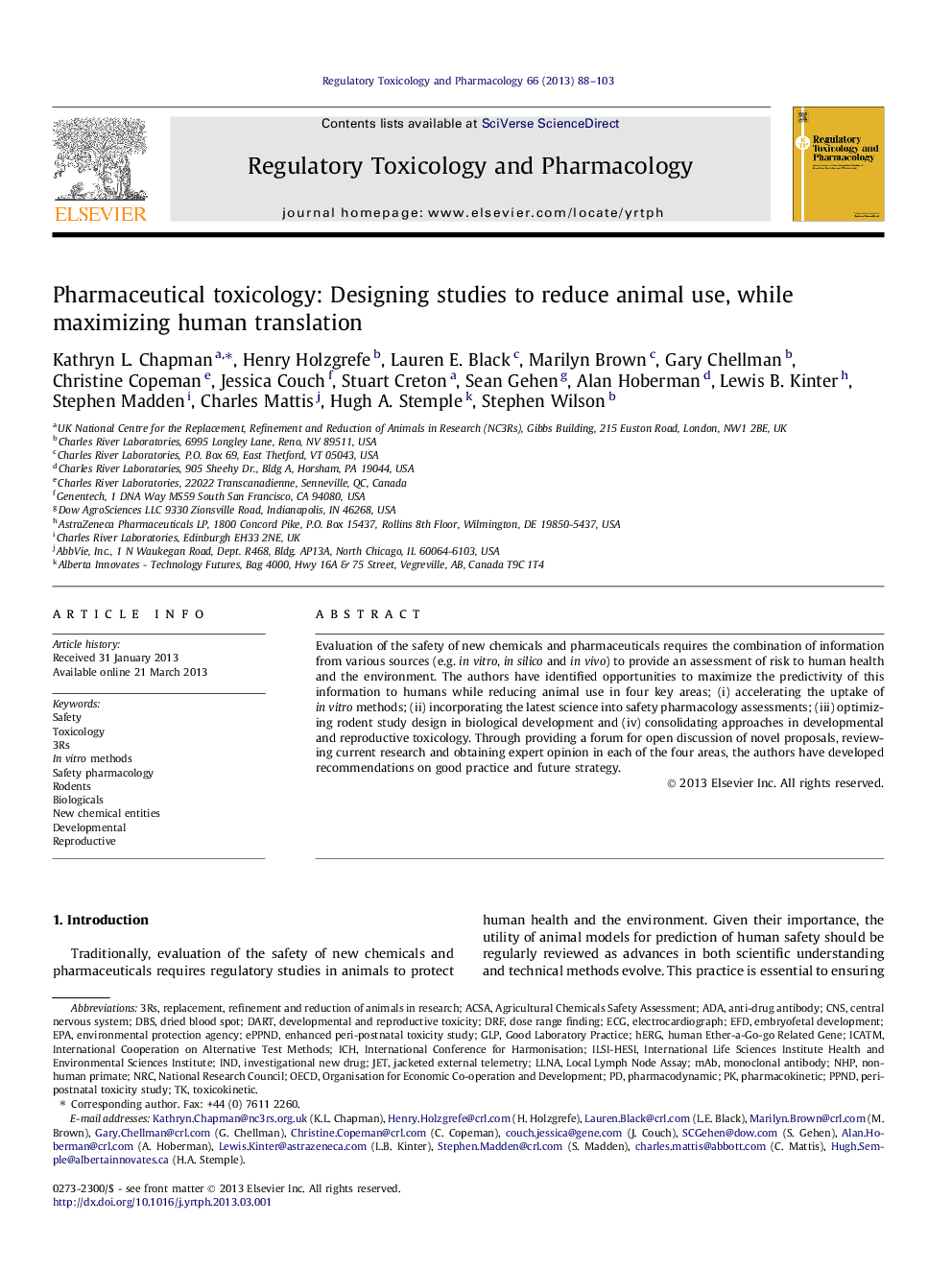| Article ID | Journal | Published Year | Pages | File Type |
|---|---|---|---|---|
| 5856969 | Regulatory Toxicology and Pharmacology | 2013 | 16 Pages |
Abstract
Evaluation of the safety of new chemicals and pharmaceuticals requires the combination of information from various sources (e.g. in vitro, in silico and in vivo) to provide an assessment of risk to human health and the environment. The authors have identified opportunities to maximize the predictivity of this information to humans while reducing animal use in four key areas; (i) accelerating the uptake of in vitro methods; (ii) incorporating the latest science into safety pharmacology assessments; (iii) optimizing rodent study design in biological development and (iv) consolidating approaches in developmental and reproductive toxicology. Through providing a forum for open discussion of novel proposals, reviewing current research and obtaining expert opinion in each of the four areas, the authors have developed recommendations on good practice and future strategy.
Keywords
EPAACSANHPGLPembryofetal developmentLLNAdose range findingHERGOECDEFD3RsToxicokineticJacketed external telemetryDArTDRFNRCmAbDBSLocal lymph node assayAnti-drug antibodyMonoclonal antibodyEnvironmental Protection AgencyelectrocardiographECGindSafetyReproductiveBiologicalsGood Laboratory PracticeJetRodentsInvestigational New DrugSafety pharmacologyCNSDevelopmentalIn vitro methodsOrganisation for Economic Co-operation and DevelopmentDevelopmental and reproductive toxicityToxicologycentral nervous systemNational Research CouncilpharmacodynamicpharmacokineticICHnon-human primateDried blood spotnew chemical entitiesADAhuman Ether-a-go-go Related Gene
Related Topics
Life Sciences
Environmental Science
Health, Toxicology and Mutagenesis
Authors
Kathryn L. Chapman, Henry Holzgrefe, Lauren E. Black, Marilyn Brown, Gary Chellman, Christine Copeman, Jessica Couch, Stuart Creton, Sean Gehen, Alan Hoberman, Lewis B. Kinter, Stephen Madden, Charles Mattis, Hugh A. Stemple, Stephen Wilson,
